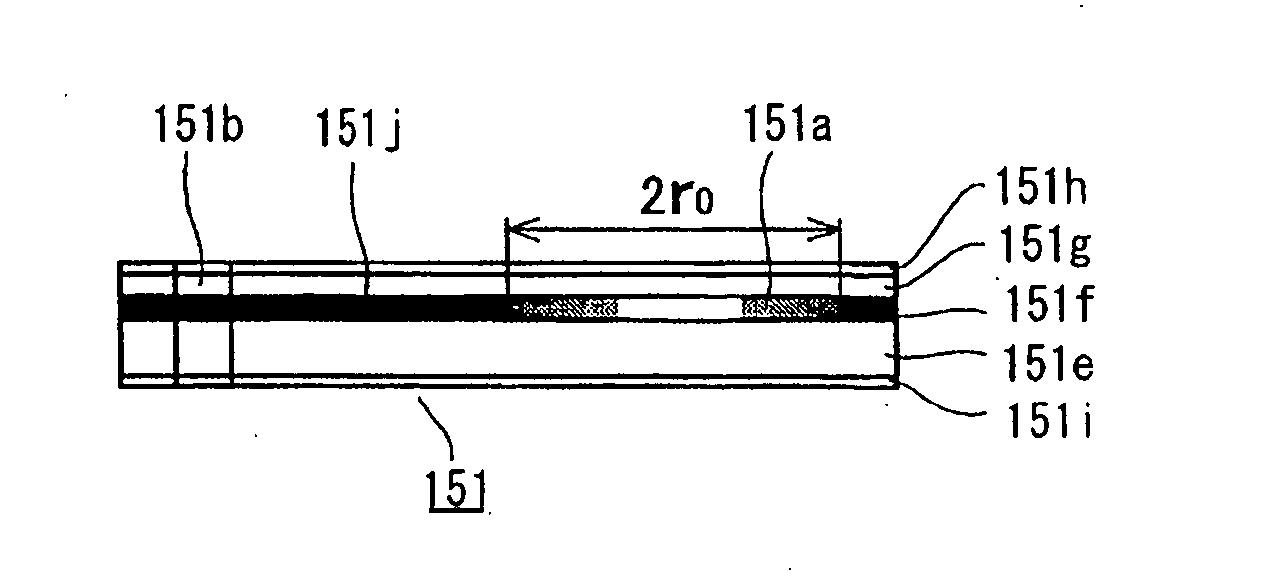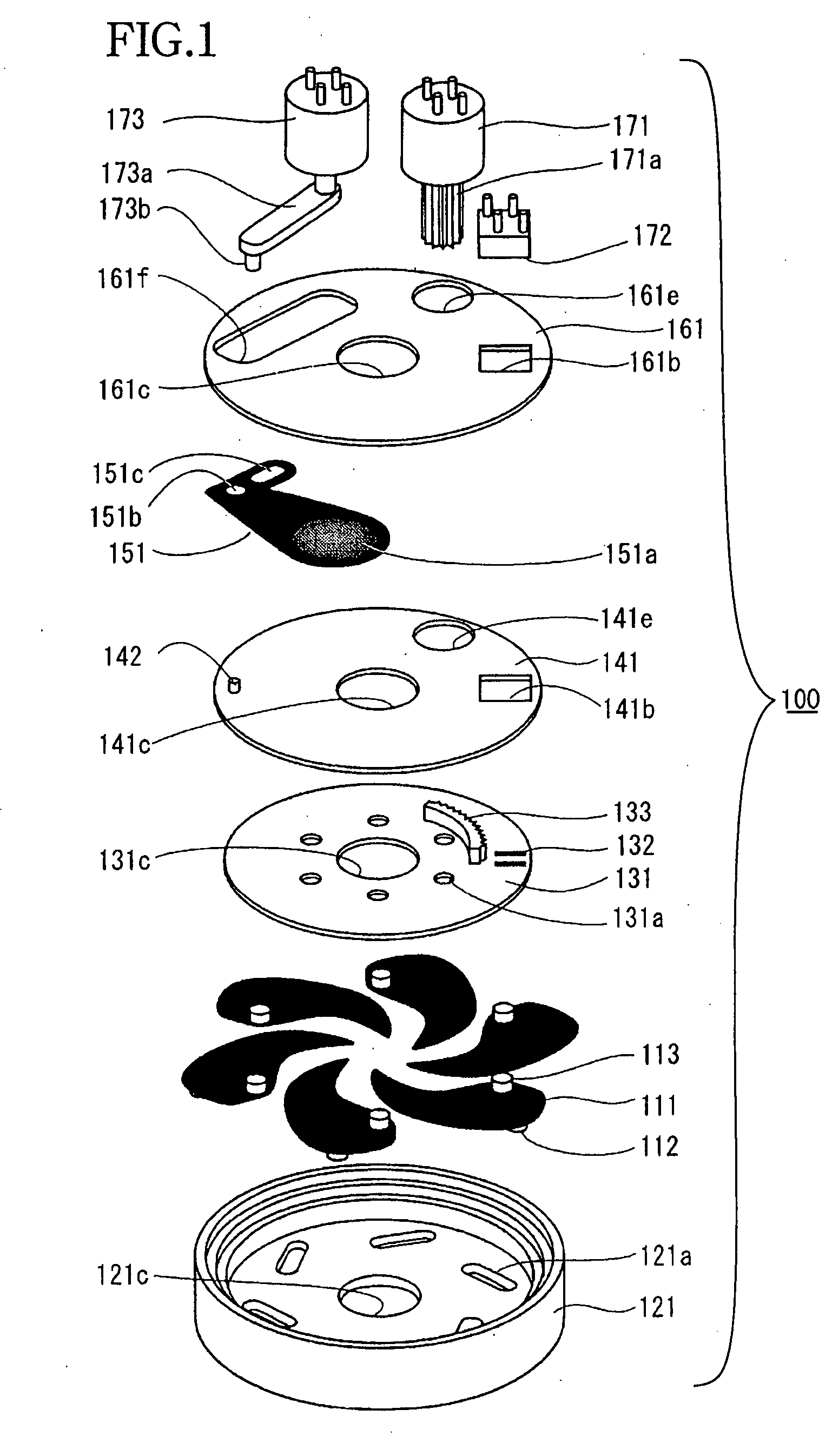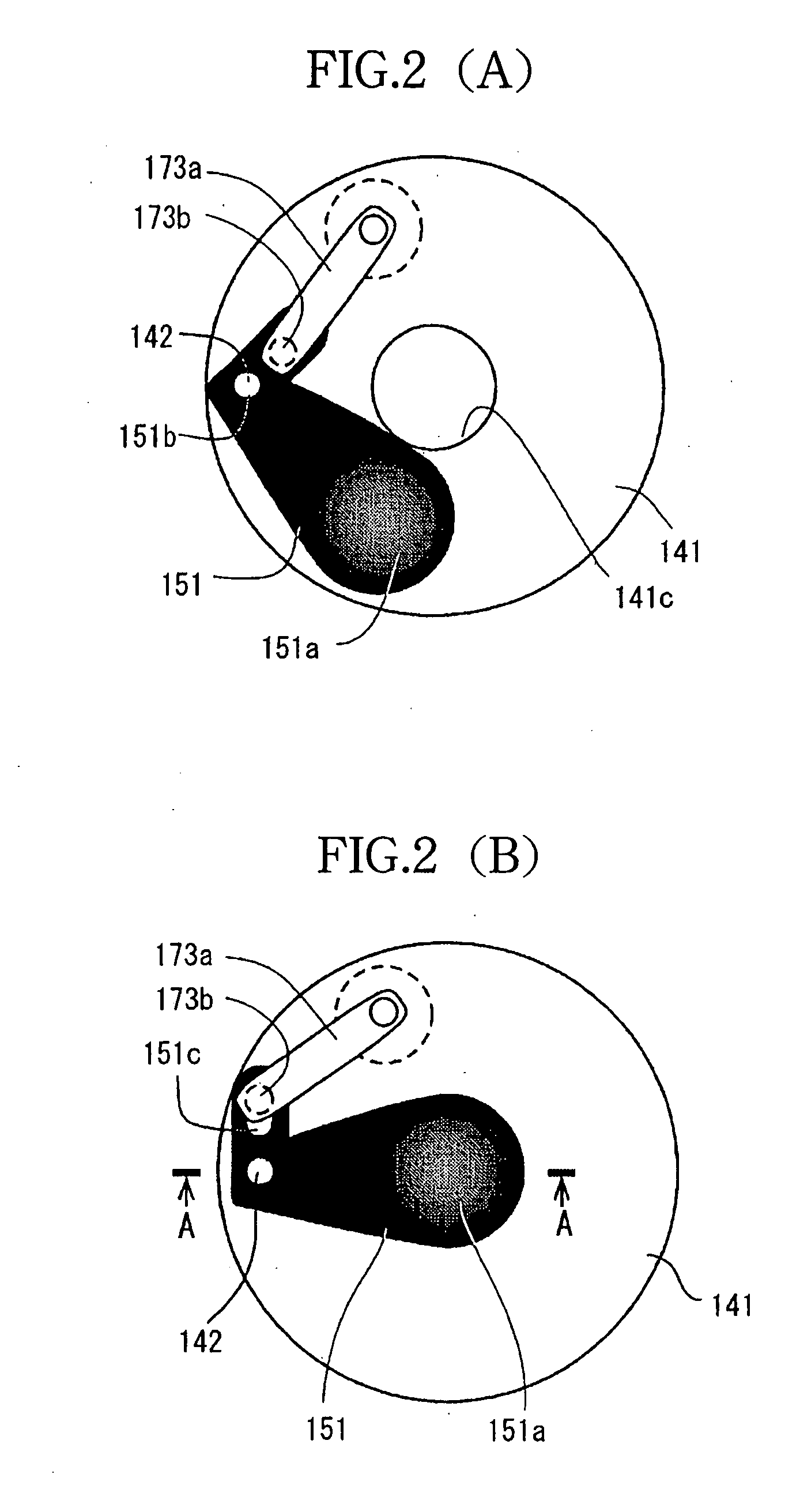Light amount adjusting apparatus, optical equipment, optical filter and image-taking apparatus
a technology of light amount and adjustment apparatus, which is applied in the direction of exposure control, camera focusing arrangement, printers, etc., can solve the problems of loss of three-dimensional impression and image depth, and inability to adjust the light amoun
- Summary
- Abstract
- Description
- Claims
- Application Information
AI Technical Summary
Benefits of technology
Problems solved by technology
Method used
Image
Examples
embodiment 1
[0095] FIGS. 1 to 7 illustrate Embodiment 1 of the present invention.
[0096]FIG. 1 is an exploded perspective view showing essential parts of a light amount adjusting apparatus 100 incorporating an apodization filter according to the present invention. In FIG. 1, reference numeral 111 denotes diaphragm blades having a property of blocking light across their entire region. Driven pins 112 and 113 are arranged upright on the lower and the upper surface of the diaphragm blades 111. Six diaphragm blades 111 of the same shape are used, forming a diaphragm aperture. It should be noted that the larger the number of diaphragm blades 111 is, the closer the shape of the aperture becomes to being circular when the diaphragm blades 111 are constricted, improving the naturalness of the blurred image and easing the diffraction phenomena due to the vertices of the polygonal aperture, but a larger number of blades also incurs greater manufacturing costs. Consequently, in the present diaphragm mecha...
embodiment 2
[0147] The apodization filter 151 used in Embodiment 1 has only one filter portion in which the transmission rate distribution decreases linearly from the center to the periphery, and the actuator only advances or retracts the filter with respect to the light flux transmitted through the light-flux transmission aperture, whereas Embodiment 2 explained below is an example in which a plurality of apodization filters are arranged on one filter substrate, and the most appropriate effective filter portion can be selected in accordance with the image-taking intentions.
[0148]FIG. 8 is an exploded perspective view illustrating a structure of a light amount adjusting apparatus 200 according to Embodiment 2 of the present invention, and corresponds to FIG. 1 in Embodiment 1.
[0149] In FIG. 8, reference numeral 211 denotes diaphragm blades having a property of blocking light across their entire region. Driven pins 212 and 213 are arranged upright on a lower and an upper surface of the diaphra...
embodiment 3
[0179] FIGS. 14 to 25 illustrate Embodiment 3 of the present invention.
[0180]FIG. 14 is an exploded perspective view showing essential parts of a light amount adjusting apparatus 100 incorporating an apodization filter according to the present invention. In FIG. 14, reference numeral 111 denotes diaphragm blades having a property of blocking light across their entire region. Driven pins 112 and 113 are arranged upright on a lower and an upper surface of the diaphragm blades 111. Six diaphragm blades 111 of the same shape are used, forming a diaphragm aperture. It should be noted that a larger the number of diaphragm blades 111 is, the closer a shape of an aperture becomes to being circular when the diaphragm blades 111 are constricted, improving a naturalness of a blurred image and easing a diffraction phenomenon due to vertices of the polygonal aperture, but a larger number of blades also incurs greater manufacturing costs. Consequently, in the present diaphragm mechanism, it is p...
PUM
 Login to View More
Login to View More Abstract
Description
Claims
Application Information
 Login to View More
Login to View More - R&D
- Intellectual Property
- Life Sciences
- Materials
- Tech Scout
- Unparalleled Data Quality
- Higher Quality Content
- 60% Fewer Hallucinations
Browse by: Latest US Patents, China's latest patents, Technical Efficacy Thesaurus, Application Domain, Technology Topic, Popular Technical Reports.
© 2025 PatSnap. All rights reserved.Legal|Privacy policy|Modern Slavery Act Transparency Statement|Sitemap|About US| Contact US: help@patsnap.com



